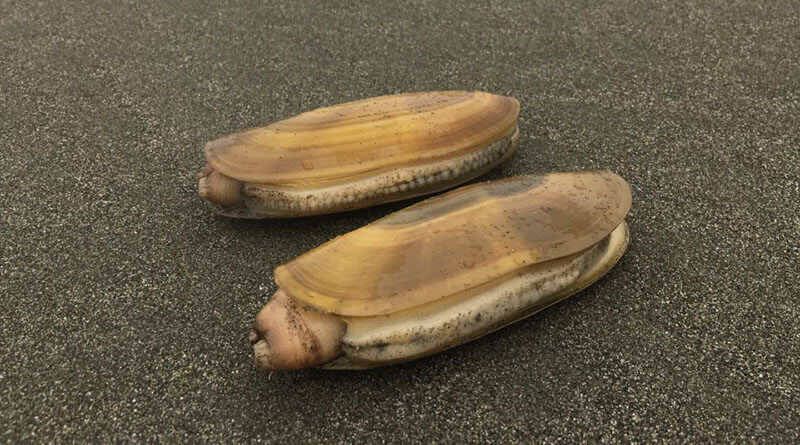Razor Clam Fishery Poses Public Health Hazard
A toxin that can be fatal for humans has been detected in unsafe quantities in two California razor clam fisheries.
HUMBOLDT— On April 21, the California Department of Fish and Wildlife (CDFW) Director, Charlton H. Bonham, announced the closure of the recreational razor clam fishery in Humboldt County after state health agencies recommended doing so. It has been proposed that the consumption of razor clams in that area poses a significant threat of domoic acid.
Domoic acid is a naturally occurring kainic acid-type neurotoxin that causes amnesic shellfish poising and is produced by algae and accumulates in shellfish, sardines, and anchovies. While bivalve shellfish such as clams and mussels can collect the toxin without being harmed, domoic acid can be fatal to people if consumed in high doses. According to the CDFW, razor clams are known to bioaccumulate domoic acid, meaning it may not clear their system until long after the ocean conditions that caused it to have diluted.
A sampling of the Humboldt County razor clams was conducted in early April. Results showed clams exceeding the current federal action level of domoic acid, which is greater than or equal to 20 parts per million.
“During the closure, clams remain protected from recreational harvest,” said Christy Juhasz, Senior Environmental Specialist for the CDFW, in an email from May 3. “Domoic acid doesn’t affect the health of razor clams, and they just depurate the toxin over time at some rate that is also dependent on whether future algal bloom events specific to the species Pseudo-nitzschia spp. occur. We had a long-term closure of the recreational razor clam fishery between 2016 and 2021 due to continued presence of domoic acid tested in clams during these years of sampling.”
A human exposed to domoic acid can experience poisoning within minutes to hours after consuming the affected seafood. Symptoms can range from vomiting and diarrhea to permanent loss of short-term memory, also called Amnesic Shellfish Poisoning. Severe poisoning can result in coma or death. In addition, no preparation method will remove the toxin from the animal; cooking and freezing have no effect.
The recreational clam fishery in Del Norte County is also closed at this time. The CDFW will continue working alongside the California Department of Public Health (CDPH) and the Office of Environmental Health Hazard Assessment to collect, monitor, and analyze the razor clams to determine when the recreational razor clam fishery can safely be reopened in these areas.
“Razor clams are known to retain domoic acid well after [an] algal bloom event has occurred,” said Juhasz. “In order to reopen the fishery CA Dept of Public Health (CDPH) tests razor clams, and they need [two] sets of samples taken at least a week apart that test below the 20 ppm (parts per million) concentration for domoic acid to lift advisory and for the Office of Health Hazard Assessment (OEHHA under CalEPA) will recommend to CDFW Director to reopen the fishery.”
In addition to the CDPH coordinating routine checks along the California coast, commercial shellfish harvesters must also provide weekly shellfish samples to CDPH for Paralytic Shellfish Poisoning (PSP)and domoic acid analysis.
The CDFW decided to close the razor clam fishery in Del Norte County on Nov. 3, 2022, and the Humboldt County location as of April 21. The CDPH is the state agency that tracks public health incidents related to domoic acid, and the CDFW is the agency that manages fisheries and will close and open them based on health agency recommendations.
For more information on the current fishing season closures related to domoic acid exposure, call the CDFW’s Domoic Acid Fishery Closure Information Line at (831) 649-2883. For the latest consumption warnings, call CDPH’s Biotoxin information line at (510) 412-4643.


